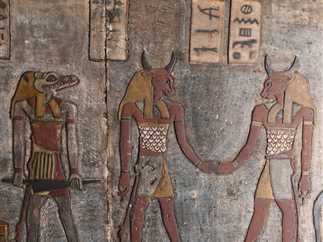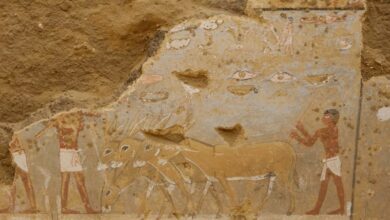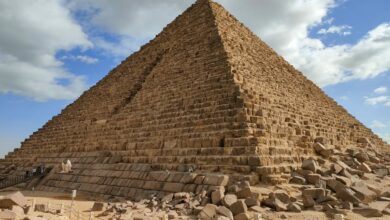
A team of Egyptian and German restorers uncovered for the first time, an inscription of a zodiac on the roof of the hypostyle hall in the southern side of the Esna Temple.
Other drawings of gods and animals were also uncovered during a project to record, document and restore the temple and show its original colors, carried out by a joint Egyptian-German mission from the Egyptian Antiquities Ministry and the University of Tübingen, according to Mostafa Waziri, Secretary General of the Supreme Council of Antiquities.
The discovered scenes were not among the documented scenes by French Egyptologist Serge Sauneron, which adds new importance to this temple and its unique inscriptions.
Waziri added that this discovery will greatly contribute to increasing the flow of tourists to the temple to enjoy seeing these unique astronomical scenes, especially since there is no complete representation of the scene of the constellations in ancient Egypt except in the Dendera Temple in Qena Governorate.
The newly discovered scene of the zodiac depicts astronomical constellations from Aries to Pisces, in addition to representing the outer planets, which are Jupiter, Saturn, and Mars, which is a depiction of the so-called seven arrows, Egyptologist Hisham Ellaithy, head of the mission from the Egyptian side, said, adding some of the represented stars or constellations as well, were used by the ancient Egyptians to measure time.
A number of scenes depicting a number of Egyptian deities and animals, including snakes and crocodiles, were also uncovered, as well as scenes of complex creatures such as a snake with a ram’s head or a bird with a crocodile’s head, a snake’s tail with four wings, in addition to inscriptions in black ink with the names of divine beings, Christian Leitz, head of the mission from the German side, added.
The history of the temple dates back to the Roman era. Its construction began in 186 BC. and took about 400 years to be completed, as it was completed in 250 AD.
The temple consists of one column hall that includes 24 columns with inscriptions and scenes of the Ptolemaic kings and Roman emperors.




